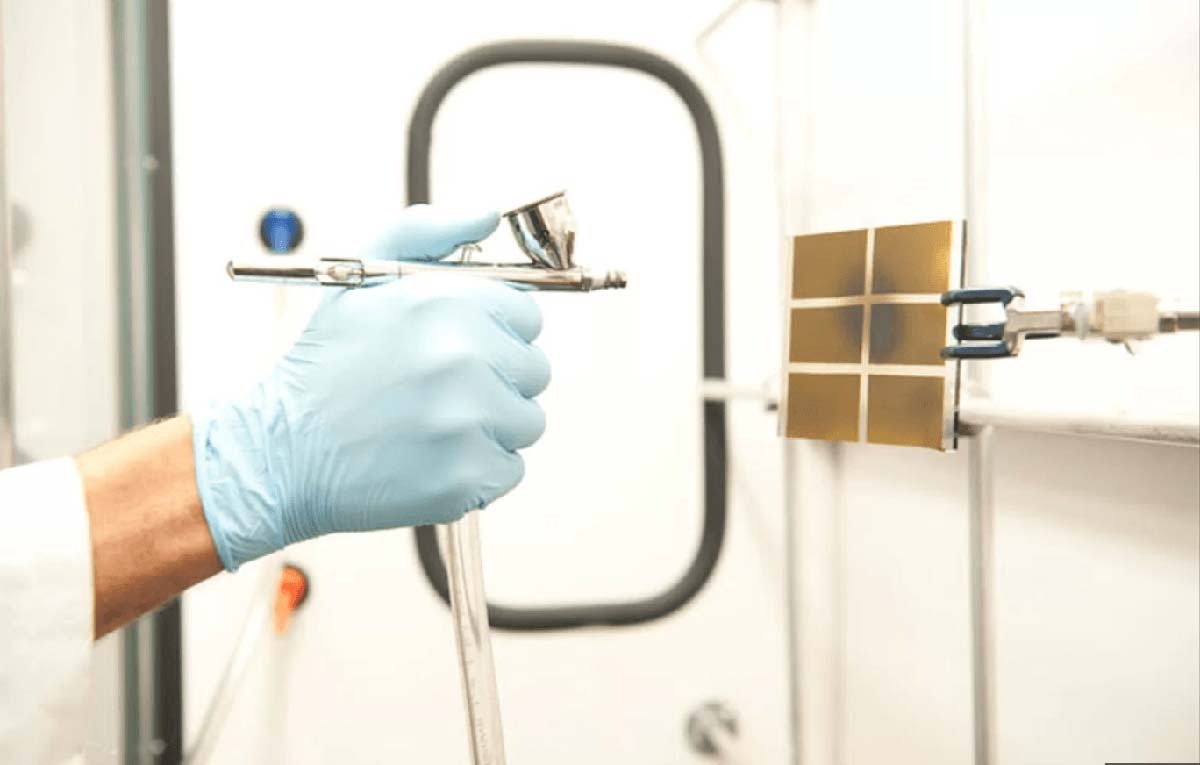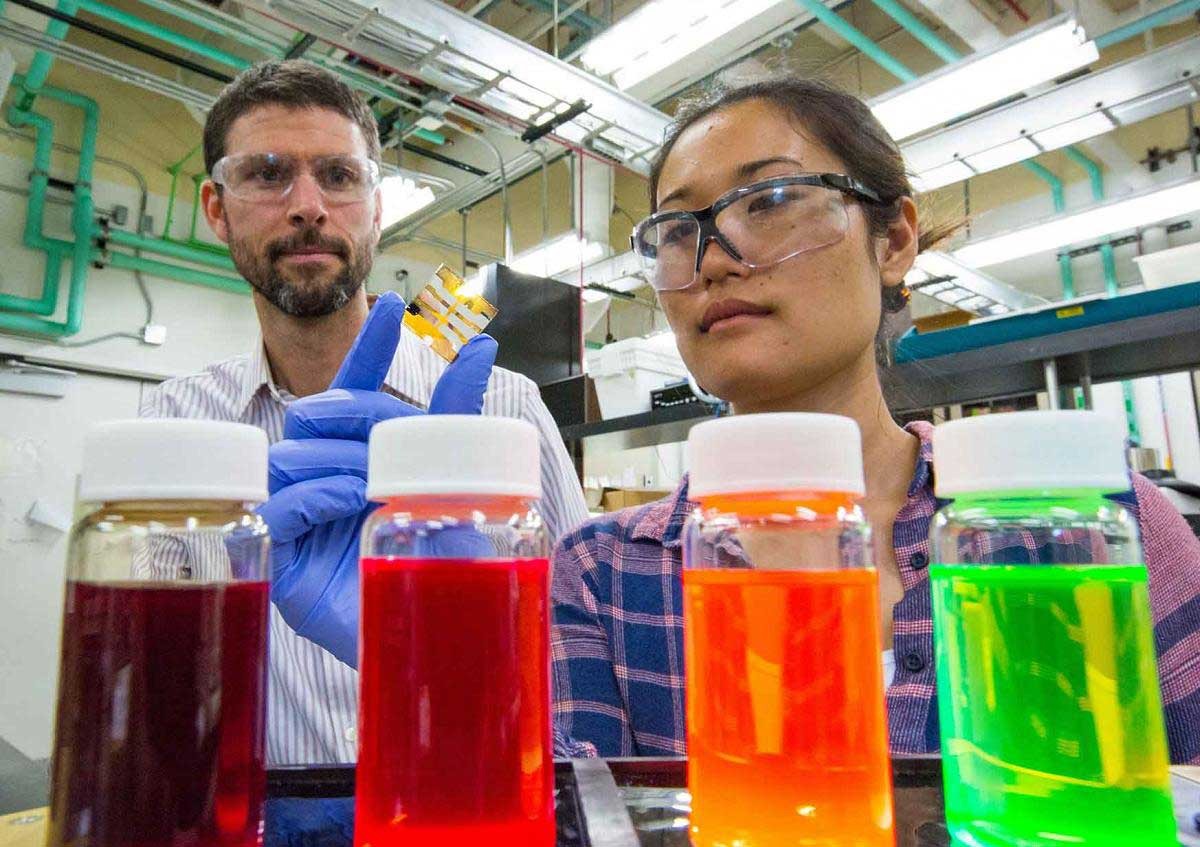
Find out what solar panels cost in your area
As of 2025, the U.S. solar industry is attracting private investment activity worth tens of billions of dollars. When that kind of serious cash starts flooding an industry, you know new innovation isn't far behind.
And what sounds more innovative than ‘solar paint’? A paint that can generate electricity, but still works as normal paint? The ability to turn not only a roof, but an entire building into a solar-generating surface? If that doesn't scream innovation, then I don't know what does.
So far, the lifeblood of the solar industry has been traditional photovoltaic solar panels. Solar panels are a well-proven technology that save homeowners a ton of money. However, the hassle and expense of rooftop panel installations often deter people from switching to solar energy.
Now imagine a world where we could simply paint our roofs and walls with a type of paint that can generate electricity. Though we're pretty far off from actually implementing this technology, it's still exciting to think about.
So, what is solar paint? The most important thing to know is that it isn’t a single product; currently there are three different technologies that are referred to as 'solar paint'.
The 3 types of solar paint
The idea of using a paint-like substance to generate electricity has been discussed within the scientific community for many years. Only recently have the potential for real-world applications emerged.
There are three separate innovations that are classified as solar paints. Here we explore what they are and what they might mean for the future of solar energy.
#1 Solar paint hydrogen

Professors from the research team at RMIT University who have developed the hydrogen-extracting solar paint. Image source: RMIT
A team of researchers from the Royal Melbourne Institute of Technology (RMIT) have developed solar paint that generates energy from water vapor.
Put simply, the paint works by absorbing moisture from the air and using solar energy to break the water molecules into hydrogen and oxygen. The hydrogen can then be used to produce clean energy.
This is how the paint actually works: it contains a newly developed substance, synthetic molybdenum-sulfide. Absorbing moisture from the air, it works similarly to silica gel, which you’ve undoubtedly seen packaged with consumer products in order to keep them dry.
This solar paint also contains titanium oxide, a substance already present in conventional paint. The titanium oxide helps the paint use solar energy to break down the absorbed moisture into hydrogen and oxygen particles. The hydrogen can then be used to produce clean energy.
RMIT lead researcher Dr. Torben Daeneke stated, “Our new development has a big range of advantages. There’s no need for clean or filtered water to feed the system. Any place that has water vapor in the air, even remote areas far from water, can produce fuel.”
What makes this technology particularly special is that it outputs hydrogen, a clean source of fuel and energy storage. If they reach the point where they are ready for commercial use, this hydrogen-collecting solar paint might just be an environmentally friendly and cost-effective way to collect hydrogen for producing energy.
#2 Quantum dot solar cells, aka photovoltaic paint

Scientists that have helped NREL set a new efficiency record of 13.4% for a quantum dot solar cell. Photo by Werner Slocum / NREL
Quantum dots, also known as photovoltaic paint, were developed at the University of Toronto. They are nanoscale semiconductors that can capture light and turn it into an electric current.
‘Colloidal quantum dot photovoltaics’ - to use the full technical term - are not only cheaper to manufacture, but are also significantly more efficient than traditional solar cells.
According to research paper author Susanna Thon, “There are two advantages to colloidal quantum dots. First, they’re much cheaper, so they reduce the cost of electricity generation measured in cost per watt of power. But the main advantage is that by simply changing the size of the quantum dot, you can change its light-absorption spectrum.”
These dots could end up being up to 11% more efficient than traditional solar panels. In theory, at some point in the future, we would have the ability to paint these quantum dots on our roofs and other surfaces in order to transform sunlight into electricity.
#3: Perovskite solar paint

NREL scientist David Moore paints a perovskite solution onto glass. Image source: nrel.gov
Known alternatively as spray-on solar cells, what makes this type of solar paint possible are perovskites.
Named after Russian mineralogist Lev Perovski, perovskite materials are derived from a calcium titanium oxide mineral. Perovskite structure was first discovered in 1839, but it was only 10 years ago that a research team in Japan debuted the first-ever application of perovskite for the production of solar cells.
What makes perovskite solar cells particularly interesting is the fact that they can take liquid form, thereby making them the ideal candidate for solar paint.
In fact, researchers have developed a way to spray liquid perovskite cells on surfaces, known as spray-on solar cells. The first-ever spray-on solar cell was developed at the University of Sheffield in 2014. A perovskite-based mixture was sprayed onto a surface to form a sun-harnessing layer.
The future of solar paint

A man painting a wall, or solar installer of the future? Image source: NBC news
Here are 3 ways in which solar paint could be used in the future:
Add solar paint to existing solar setups. Solar paint may work as a great way to enhance existing solar setups. People with solar panels installed could create an additional energy source by painting their roofs and walls with solar paint.
Solar painted vehicles. With some tweaks, solar paint could be a great way to add solar-generating capacity to vehicles.
A standalone power-generating solar setup. With increased efficiency levels and cheaper production costs, high-quality solar paint could one day start working as a primary source of power generation for homes and businesses.
Final word on solar paint
Solar paint technologies discussed here have the power to completely revolutionize the renewable energy industry. Solar paint of any kind could make solar power systems ubiquitous around the world. Every roof has the potential to be solar painted.
But, alas, this reality is in the future - much like solar roadways and other forms of solar transportation - we are years away from commercial applications of solar paint technology.
Until then, if you are keen on saving some serious cash on electricity bills and generating your own clean energy, rooftop solar panels are without a doubt the way to go. The 30% government tax credit offered until the end of 2032 makes getting solar panels for your house a no-brainer.
Aditya is a best-selling author, journalist, and scriptwriter. He also has several years of customer service experience in the energy sector. He is an ardent believer in the transformative power of solar energy and loves digging for new solar stories and trends. He is convinced that harnessing solar energy will soon be the norm around the world....
Learn more about Aditya Gautam